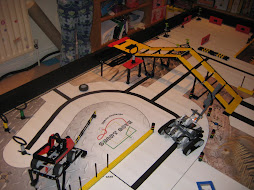An e-mail I got from the Highways Ahency
Dear Matilda Price:
Thank you for your email. Your latest query has been passed to me to answer. My response is set out below
The Highways Agency is an executive agency of the Department for Transport. We manage, maintain and improve England’s motorways and trunk roads on behalf of the Secretary of State. Unfortunately, we do not own any fords so you should contact your local Highways Authority as they will be in a better position to provide you with better information on this topic and local examples. However, as an Environmental Advisor for the Highways Agency working in the Environment Group and dealing with water quality issues, I am pleased to help you responding your questions.
Why are the fords still fords?
Why isn't there a bridge?
Why do they get too high?
A ford is a place in a watercourse that is shallow enough to be crossed. It is mostly a natural phenomenon, in contrast to a low water crossing, which is an artificial bridge that allows crossing a river or stream when water is low.
One of the reasons fords stills fords is because it is a much cheaper form of river-crossing than a bridge but it may become impassable after heavy rain or during flood condition as you explained in your email. A ford is therefore normally only suitable today for very minor roads. Most modern fords are shallow enough to be crossed by cars and other wheeled or tracked vehicles. However, the problem about fords is that they overflow in wet weather.
At places where the water is shallow enough, but the material on the riverbed will not support heavy vehicles, fords have to be improved by the provision of a submerged concrete floor. In such cases a curb is often placed on the downstream side to prevent vehicles slipping off, as growth of algae will often make the slab very slippery.
I hope the above provides you enough information. Should you have any questions, please do not hesitate to contact me
Best Regards
Subscribe to:
Post Comments (Atom)

























No comments:
Post a Comment